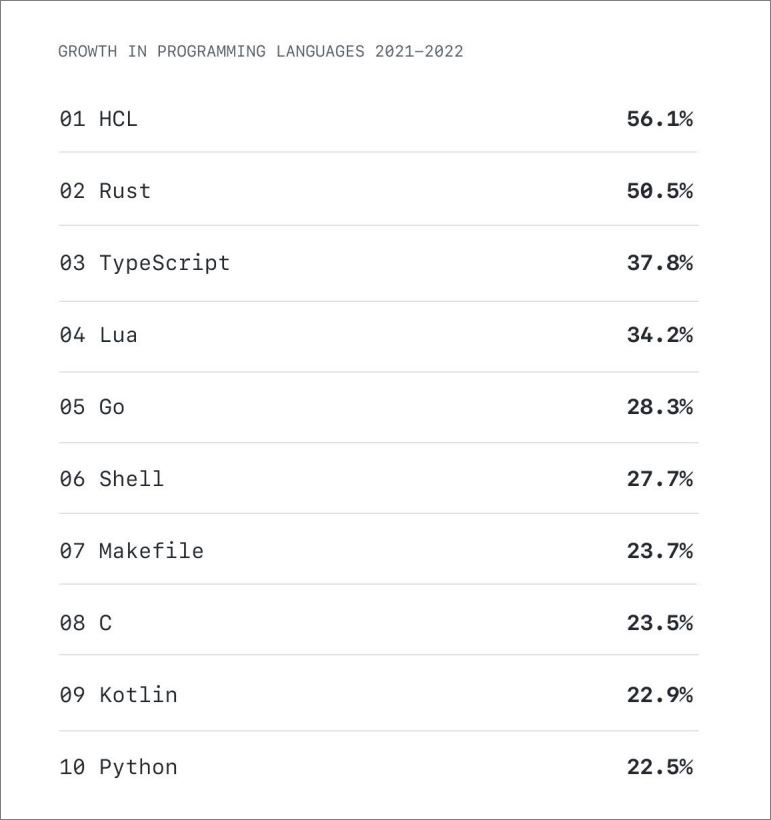Use of the Rust programming language in open source projects was up by more than 50 per cent last year as a new set of must-learn languages emerges to challenge the old guard, according to a new report from GitHub.
Rust is known for its ability to deliver Python-like utility with the speed and memory control of C – leading to it being among the world’s most energy efficient languages.
Since its first release in 2015, Rust’s popularity has continued to grow including among research scientists who find it perfect for their data-heavy workloads.
In its latest State of the Octoverse report, GitHub noted the rise of Rust alongside other efficient languages like Go, the usage of which was up 28 per cent over the last year.
But the overall fastest growing language across GitHub repositories was the Hashicorp Configuration Language (HCL) which has had year-on-year growth of 56 per cent.
Martin Woodward, vice president of Developer Relations at GitHub, told Information Age the rise of HCL coincided with the rising popularity of the Terraform infrastructure management tool.
“HCL was first introduced in Terraform in 2014 – which is now used across all of Hashicorp’s open source and commercial tools – to create and automate cloud workflows across organisations,” Woodward said.
“Between the sharp rise in HCL usage – plus Shell and Go – and the year-over-year increase in GitHub Actions utilisation, we are seeing more and more developers tackle their own operations with infrastructure as code, as well as automation and [continuous integration/continuous delivery] CI/CD.”
HCL and Rust are the fastest growing programming languages. Source: GitHub
Overall, the most commonly used languages on the GitHub platform are the usual suspects with Javascript, Python, Java, Typescript, and C# making up the top five.
These are among the most self-taught programming languages because of their popularity but if you’re looking to get started or are wanting a new language to get ahead in your career, Woodward suggests a language-agnostic approach to learning.
“While some are more popular and widely used than others, the structures underpinning those various ‘flavours’ of software development can be implemented across a variety of languages,” he told Information Age.
“What’s most important is a firm comprehension of the fundamentals.
“For example, being able to create and call a function, create variables, understand conditionals, and make application programming interface (API) calls, can provide a solid knowledge base that can be employed across multiple languages.”











